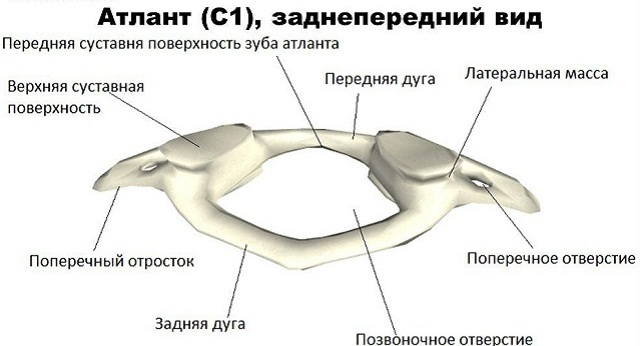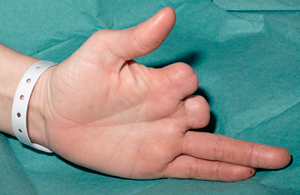 One of the most unpleasant and complex operations in surgical practice is limb amputation. Very often this term is confused with exarticulation, although in reality these concepts are far from being equivalent.
One of the most unpleasant and complex operations in surgical practice is limb amputation. Very often this term is confused with exarticulation, although in reality these concepts are far from being equivalent.
Let's see what the difference is between them, when medical indications require such radical measures and how long the rehabilitation period lasts.
Contents of the article
- Amputation and exarticulation: concept and difference
- Indications for radical measures
- Operations
- Preparation for operation
- Technique and stages of the truncation procedure
- Rehabilitation period
- Possible complications
Amputation and exarticulation: concept and difference
Under amputation is the limb truncationlegs or hands) throughout the bone. Exarticulation is the isolation of the limb in the joint. Thus, exarticulation is in its way one of the types of amputation.
Each time the need arises for such an intervention, the question of the location of the incision and the method of performing the operation is decided by the doctor individually, based on the nature of the injury or disease, as well as the condition of the patient.
Most often, the final decision on amputation is taken only after consulting an orthopedist.
Indications for radical measures
Medical practice distinguishes between absolute and relative indications to the removal of part or all of the limb. All of them must be justified in the medical records of the patient.
Absolute indications:
- malignant tumors;
- gangrene of arbitrary origin( diabetes, thrombosis, electric injury, resulting from burns, etc.);
- detachment of the limb( with the connection of tendons or bridges from the skin);
- is a serious infection that threatens the patient's life, for example, sepsis;
- open injuries with bone fragmentation;
- trauma with rupture of the main vessels and nerve trunks;
- injury with crushing muscles.
Relative indications: 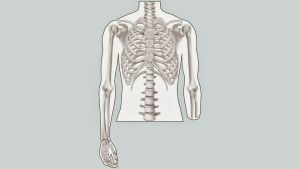
- strong bone defects, excluding the possibility of prosthetics;
- chronic osteomyelitis with amyloidosis;
- long-lasting non-treatable trophic ulcers;
- congenital limb problems that exclude the possibility of prosthetics;
- irreparable paralytic or post-traumatic limb changes.
During the planning of the operation, the physician should also take into account the possibility of subsequent prosthetics of the injured limb.
Types of operation
There are several basic types of amputation:
- Primary .It is also called amputation according to primary indications. It is produced as a primary treatment for trauma. In this case, the surgeon quickly and clearly removes the non-viable limb. The operation is performed in the shortest time after the injury, when the clinical signs of infection have not yet developed. The specific level of clipping is selected on an individual basis, based on the general condition of the wounded, as well as the location of the wound.
- Secondary amputation is performed in cases where conservative treatment methods have already shown their inefficiency. The operation is performed in case of development of complications that threaten the patient's life, at any stage of treatment.
- The late amputation is the result of prolonged treatment of osteomyelitis, when it already begins to threaten organ degeneration. It is carried out because of long-term healing injuries and fistulas, as well as on an inoperable limb in the presence of multiple ankyloses. In simple words, late amputation is performed during prolonged treatment, which does not give a positive result.
- Re-Assumption .Repeated operation, which is performed in cases when the previous truncation did not have a proper result. It is most often performed with perverse cults that do not allow prosthetics, in case of tissue necrosis after surgery due to gangrene and in other such cases.
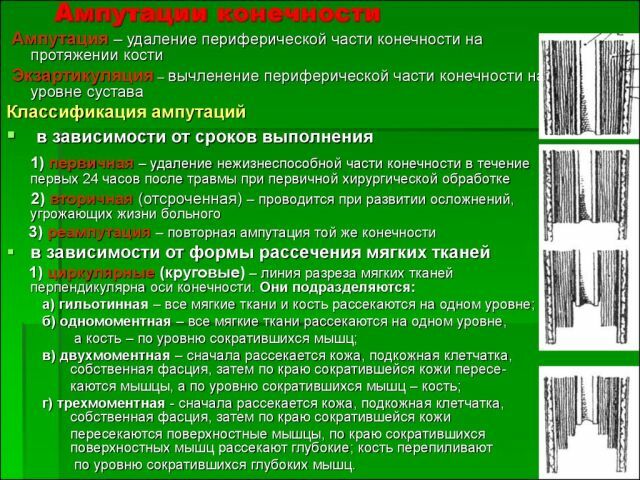
Preparation for operation
First, before the beginning of all procedures, doctors should establish the severity of the injury and evaluate the possibility of saving the limb. In some cases, it is possible to restore blood flow if earlier measures were taken in a timely and competent manner to restore the vessels.
 Also, in preparation for the operation, doctors conduct measures to combat shock until the condition of the victim stabilizes. Diabetes mellitus corrects the disease.
Also, in preparation for the operation, doctors conduct measures to combat shock until the condition of the victim stabilizes. Diabetes mellitus corrects the disease.
In case of local infection, the operation is postponed as much as possible, and with a damp gangrene, the extent of spreading is attempted to reduce by covering the leg with ice.
The patient is also given anesthesia. Most often in its role is used spinal anesthesia, but in some cases infiltration, inhalation or conductive anesthesia can be used.
Technique and stages of the truncation procedure
During the operation, the patient is positioned at the edge of the table, maximally removing the affected limb: the arm is stretched, the leg is raised to increase the outflow of blood. Next, a tourniquet is applied depending on the site of the lesion. An exception is atherosclerosis, since in this case the blood flow in the stump may worsen.
In the case of small amputations, the skin on the injured limb is treated with an antiseptic, elastic bandages are added to the base of the fingers. In the case of an amputation of the leg above the knee or arm above the elbow, the limb is wrapped with a sterile film.
The main rule for truncation is the rule of keeping the longest. In the case of the lower extremities, exceptions are possible, but the doctor will always try to keep the knee.
At the same time, due to the peculiarities of the circulation, amputation is often performed. It is performed as quickly as possible and ensures the subsequent healing in a short time. The most complex are the overclosure and the knee exarticulation, which makes it difficult to further fix the prosthesis.
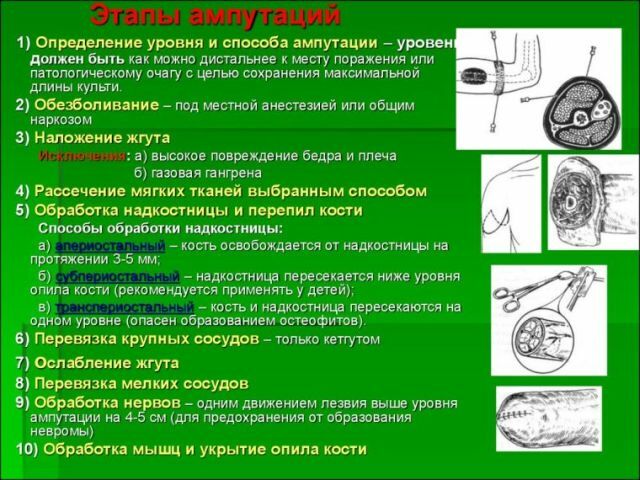
The procedure itself takes place in several stages:
- formation of skin flaps;
- dissection of muscle fibers;
- dissection of periosteum and subsequent lateral shift;
- bone sawing and sawing;
- Vessel dressing;
- suppression of nerves;
- suturing and wound treatment.
In the case of leg amputation below the knee, the longest rule is not used because of the subsequent difficulties in adapting to the prosthesis.
The front edge of the tibia is mowed, this allows a long flap to be formed to cover the bone and provide the affected area with sufficient blood circulation.
The optimal length of the bone for truncation is from 12 to 18 cm. With knee disarticulation, surgeons try to keep a small stump that will help to attach the prosthesis. The tibia is amputated above the tibia, as it can not bear the pressure of the prosthesis.
Of the other features of the procedure:
- When amputating hands, doctors try to leave the postoperative scar. This will allow the prosthesis to be attached to the lateral surface.
- To cover the stump for small operations, plantar or palmar flaps are cut.
- When cutting the toes of the foot, cuts in the form of a racket are used, which make it possible to allocate metatarsal bones. In the case of finger amputation, similar incisions are used to preserve the length. This version of the cut greatly shortens the arm or leg, but gives the limb the most aesthetic appearance.
- Arteries and veins are bandaged separately.
- When truncating, the nerves try to cross as high as possible.
Exarticulation of the toes in diabetes( Caution, video may shock):
Rehabilitation period
After completion of the operation, a cotton-gauze bandage is applied to the stump. The first time before the decline of puffiness it is required to change once in the 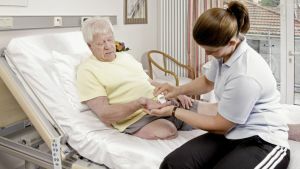 day. Initially, the stump is raised on the pillows, and lowered after 1-2 days. After another 2-3 days, rehabilitation gymnastics begins.
day. Initially, the stump is raised on the pillows, and lowered after 1-2 days. After another 2-3 days, rehabilitation gymnastics begins.
In the case of guillotine amputation, special care is used. In particular, the peripheral traction is superimposed on the damaged area, after which the edges are contracted by skin transplantation.
It is very important, as soon as possible to begin rehabilitation care - this will reduce the time of post-mutilation depression.
Temporary prosthesis is installed immediately after the removal of stitches. This will reduce pain after truncation, as well as accelerate healing. In addition, this approach helps reduce the number of psychological problems and helps the patient to return home and work as soon as possible. If the timely fitting of the prosthesis was not carried out, the doctor prescribes a special course of exercises.
Possible complications of
Among the most common complications are pain, swelling of the stump and suppuration. These early symptoms are associated with the healing process of the wound and the postoperative period.
 It is worth remembering that this period is taking place in a hospital, so prevention of complications consists in strict adherence to the doctor's instructions. Patients have to carefully follow the instructions, and also consult before self-executing actions.
It is worth remembering that this period is taking place in a hospital, so prevention of complications consists in strict adherence to the doctor's instructions. Patients have to carefully follow the instructions, and also consult before self-executing actions.
Later complications, including phantom pains, persistent swelling of the stump and the like, are most often treated with medication or physiotherapy. Cases of repeated amputation are quite rare.
Today, like many years ago, amputation is a very serious operation. However, modern medicine can reduce the negative consequences for the body, and the surgical intervention itself is performed promptly and most often painlessly. In the case of properly following the instructions of doctors, the postoperative period and rehabilitation of work capacity also occurs in the shortest possible time.



